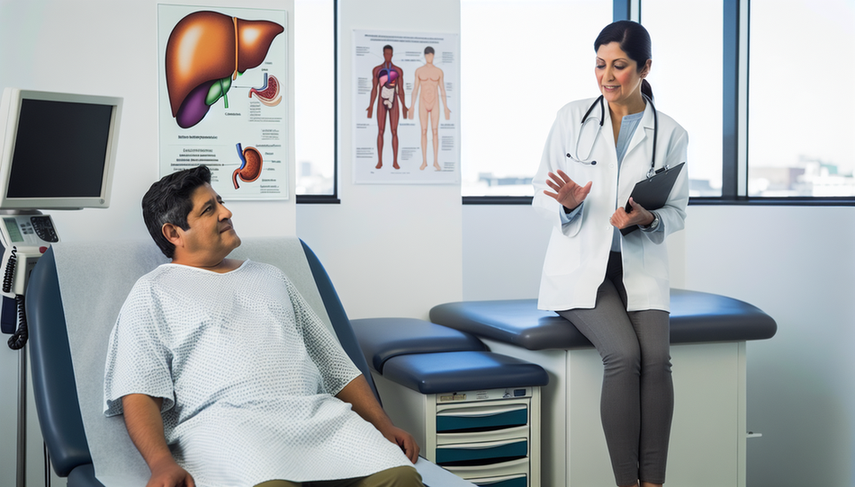Diagnosis of Liver Cirrhosis: Clinical Signs, Ultrasound, and Elastography Insights

Dear colleagues, liver cirrhosis is a chronic disease that poses a significant challenge in clinical practice due to its high morbidity and mortality rates. Accurate and early diagnosis of liver cirrhosis is crucial for improving clinical outcomes and guiding appropriate treatment. In this context, liver biopsy has traditionally been considered the gold standard for diagnosis, although it presents significant limitations. In this article, we will explore the role of liver biopsy and clinical signs in the diagnosis of cirrhosis, as well as the emerging non-invasive alternatives.
Diving Deeper into the Diagnosis of Liver Cirrhosis
Liver biopsy allows for direct visualization of the specific morphological alterations of the disease, facilitating the diagnosis and prognosis assessment of liver cirrhosis. However, its use is limited by its invasive nature, the risk of complications, and variability in sample interpretation. Despite these limitations, it remains a valuable tool in cases where non-invasive methods do not provide sufficient diagnostic information [1].
In recent years, non-invasive methods such as ultrasound and elastography have been developed to assess liver fibrosis. These methods offer a less invasive and more accessible alternative for the diagnosis of cirrhosis. Elastography, in particular, has proven to be a reliable biomarker for liver fibrosis, correlating well with biopsy results [2]. Additionally, serum biomarkers and imaging tests are increasingly being used to stratify risk and monitor disease progression [3].
Clinical signs of cirrhosis, such as ascites and hepatic encephalopathy, are important indicators of disease progression. These signs, along with imaging test results and biomarkers, can provide a more comprehensive picture of the patient's status and guide therapeutic decisions [4].
Conclusions
The diagnosis of liver cirrhosis requires a multidimensional approach that combines liver biopsy, when necessary, with non-invasive methods and the evaluation of clinical signs. The integration of these tools allows for a more accurate and less invasive assessment of the disease, thereby improving clinical management and patient prognosis. As we move forward, it is essential to continue researching and validating new technologies and biomarkers that can further enhance our ability to effectively diagnose and treat liver cirrhosis.
References
- [1] Liver biopsy for assessment of chronic liver diseases: a synopsis
- [2] Liver fibrosis quantification
- [3] Diagnostic performance of circulating biomarkers for non-alcoholic steatohepatitis
- [4] Non-invasive diagnosis of advanced fibrosis and cirrhosis
Created 4/1/2025
